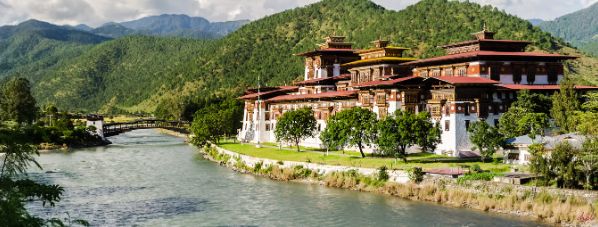Nestled deep in the Eastern Himalayas, Bhutan is a small kingdom where ancient traditions and breathtaking natural beauty coexist in perfect harmony. Known as the Land of the Thunder Dragon, Bhutan offers a rare glimpse into a world untouched by mass tourism, where happiness takes precedence over wealth and spirituality guides daily life.
A Bhutan Tour is not just a vacation — it’s a journey into a mystical land of monasteries, mountains, and mindfulness. From exploring majestic fortresses to trekking through untouched valleys, every moment spent here feels sacred, serene, and unforgettable.
A Glimpse into Bhutan’s Charm
Bhutan is unlike any other country in the world. With its pristine environment, deeply rooted Buddhist culture, and progressive philosophy of Gross National Happiness (GNH), it offers travelers a truly transformative experience.
The country limits tourist numbers through a “High-Value, Low-Impact” tourism policy to preserve its culture and environment. Every visitor is encouraged to connect deeply — with the people, the landscape, and the way of life that defines Bhutan’s peaceful rhythm.
From Thimphu’s bustling streets to the tranquil monasteries of Paro, Bhutan’s blend of ancient heritage and natural splendor makes it one of the most unique travel destinations in Asia.
Highlights of Bhutan Tours
- Visit ancient dzongs (fortresses) like Punakha Dzong and Trongsa Dzong.
- Hike to the world-famous Tiger’s Nest Monastery (Paro Taktsang), perched on a cliff.
- Explore Thimphu, the only capital city in the world without traffic lights.
- Experience traditional festivals such as Paro Tsechu or Thimphu Festival, filled with mask dances and cultural rituals.
- Trek through stunning Himalayan landscapes, from Phobjikha Valley to Dochula Pass.
- Discover Bhutanese art, handicrafts, and traditional hot stone baths.
Top Destinations to Explore in Bhutan
1. Paro
Your Bhutan journey often begins in Paro, home to the country’s only international airport and one of the most scenic valleys in the Himalayas. The highlight here is the Tiger’s Nest Monastery, dramatically perched on a 900-meter cliff. A half-day hike to this sacred site offers sweeping views and deep spiritual vibes.
Other must-see attractions include the National Museum, Paro Dzong, and the Kyichu Lhakhang, one of Bhutan’s oldest temples.
2. Thimphu
The charming capital city, Thimphu, beautifully balances tradition with modernity. Here, you’ll find handicraft markets, monastic schools, and even archery competitions — the national sport of Bhutan.
Visit the Tashichho Dzong, Buddha Dordenma statue, and Folk Heritage Museum for insights into Bhutanese history and daily life.
3. Punakha
Once the capital of Bhutan, Punakha lies in a fertile valley known for its rice terraces and warm climate. The Punakha Dzong, built at the confluence of two rivers, is among the most stunning fortresses in the country. Crossing the Suspension Bridge nearby adds a thrill to your visit.
4. Phobjikha Valley
A glacial valley and a wildlife sanctuary, Phobjikha is famous for the black-necked cranes that migrate from Tibet during winter. Surrounded by pine forests and monasteries, the valley exudes peace and simplicity, offering perfect opportunities for nature walks and homestays.
5. Bumthang
Known as the spiritual heart of Bhutan, Bumthang valley is dotted with ancient temples, monasteries, and legends. Sites like Jambay Lhakhang and Kurje Lhakhang are central to Bhutan’s Buddhist heritage. It’s also a great place to sample Bhutan’s famous red rice and homemade cheese.
Cultural Experience
One of the main reasons travelers fall in love with Bhutan is its vibrant cultural heritage. Every festival, dance, and ceremony here holds spiritual significance.
The Tsechu festivals, celebrated in different districts, showcase colorful masks, traditional dances, and rituals that honor Guru Rinpoche — the saint who brought Buddhism to Bhutan. Visitors can join locals dressed in their finest attire, enjoying the spectacle and community spirit.
Craftsmanship is another highlight. Bhutanese artisans produce exquisite handwoven textiles, wood carvings, and thangka paintings, keeping centuries-old traditions alive.
Nature and Adventure
Bhutan’s geography ranges from lush subtropical plains to snow-capped Himalayan peaks. The country has preserved more than 70% of its forest cover, making it one of the most eco-friendly nations on Earth.
For adventure lovers, Bhutan offers world-class trekking routes, such as:
- Druk Path Trek – A moderate 5-day trek connecting Paro and Thimphu through alpine lakes.
- Jomolhari Trek – A challenging trail with spectacular views of Mount Jomolhari (7,326m).
- Snowman Trek – One of the toughest treks in the world, crossing 11 high passes.
Other activities include mountain biking, white-water rafting, and bird watching, making Bhutan a paradise for outdoor enthusiasts.
Food and Hospitality
Bhutanese cuisine is as unique as its culture. Dishes are often spicy, featuring chilies, cheese, and red rice as staples. The national dish, Ema Datshi (chilies and cheese), is a must-try for all visitors.
Hospitality in Bhutan is heartwarming — whether you’re staying in a family-run guesthouse or a luxury resort. Locals welcome guests with genuine smiles, traditional butter tea, and stories of the mountains.
Responsible and Sustainable Tourism
Bhutan Tour is the only carbon-negative country in the world. The government strictly controls tourism numbers to protect its natural and cultural heritage.
To visit, travelers must book through a licensed Bhutanese tour operator or their international partners. The Sustainable Development Fee (SDF), part of Bhutan’s unique tourism policy, ensures that a portion of your travel expenses directly supports environmental conservation, infrastructure, and education.
This approach makes every Bhutan tour an example of sustainable and mindful travel — leaving minimal footprints while maximizing positive impact.
When to Visit Bhutan
The best time to travel to Bhutan is during spring (March to May) and autumn (September to November).
- Spring offers blooming rhododendrons and pleasant temperatures.
- Autumn brings crystal-clear skies and major festivals like Thimphu Tsechu.
Winter (December to February) is cold but peaceful, ideal for cultural exploration in lower valleys. Summer (June to August) is the monsoon season, great for lush greenery but less suitable for trekking.
Travel Essentials
Visa and Permits:
All foreign travelers (except Indians, Bangladeshis, and Maldivians) require a visa, arranged through a licensed tour operator. Your travel package will include accommodation, meals, transportation, and a guide.
Currency:
The local currency is the Ngultrum (BTN), pegged to the Indian Rupee.
Connectivity:
While internet access is available in most towns, remote valleys may have limited connectivity — a blessing for travelers seeking digital detox.
Why Choose Bhutan Tours
A Bhutan Tour offers something beyond sightseeing — it’s an immersion into a culture that measures success by happiness, not GDP. It’s an opportunity to reflect, slow down, and reconnect with life’s essentials.
Whether you seek spiritual rejuvenation, cultural discovery, or mountain adventure, Bhutan delivers it all with humility and grace. Each journey here inspires travelers to live more consciously and appreciate the beauty of simplicity.
Conclusion
Bhutan Tour are more than holidays — they are transformative experiences that awaken the spirit. From sacred monasteries and dramatic landscapes to warm-hearted people and mindful living, Bhutan reminds us that true wealth lies in peace and purpose.
As you explore its valleys, climb its mountains, and share smiles with its people, you’ll understand why Bhutan is known not just as the Land of the Thunder Dragon, but as the Kingdom of Happiness.

